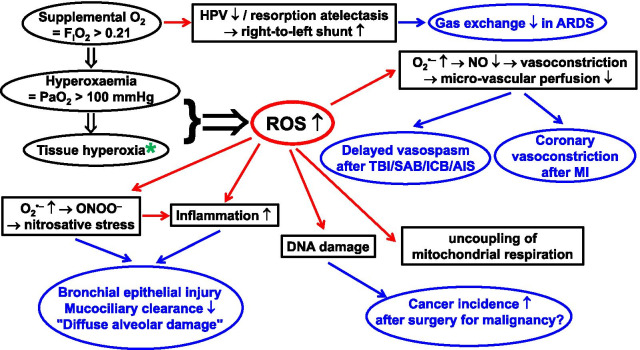Fig. 1.
Potential harm of hyperoxia. AIS acute ischaemic stroke; MI myocardial infarction; ARDS acute respiratory distress syndrome; FIO2 fraction of inspired O2; HPV hypoxic pulmonary vasoconstriction; ICB intracranial bleeding; PaO2 arterial O2 partial pressure; NO nitric oxide; ONOO‒ peroxynitrite; O2•‒ superoxide anion; ROS reactive oxygen species; SAB subarachnoidal bleeding; TBI traumatic brain injury. * Note that while hyperoxia and hyperoxaemia are well defined as FIO2 > 0.21 and PaO2 > 100 mmHg, respectively, there is no general threshold for “tissue hyperoxia”, because the normal tissue PO2 depends on the macro- and microcirculatory perfusion and the respective metabolic activity. Nevertheless, it is noteworthy that PO2 levels as low as 0.3 – 0.7 mmHg suffice for correct functioning of the mitochondrial respiratory chain [17, 162]

